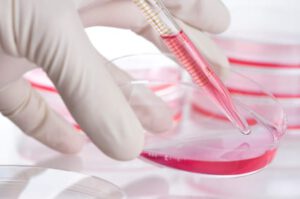
Parkinson’s disease (PD) is a relatively rare but devastating condition affecting 1-2% of Americans. Although some risk factors are known — including genetic variants that predispose to the condition — its exact causes and mechanisms remain a mystery, and development of treatments has been slow.
23andMe chose to focus on Parkinson’s disease for our first disease research community and we’ve made great strides in the two years since it launched. Our Parkinson’s research initiative was also featured in a Wired article last summer called “Sergey’s Search,” referring to Google co-founder Sergey Brin. Sergey’s mother, Genia Brin, suffers from Parkinson’s disease and learned from 23andMe that she carries two copies of the Parkinson’s-associated LRRK2 G2019S genetic variant. Sergey carries one copy of the variant. The knowledge has prompted them to take a more active role in research, including a breakthrough study published this month in Cell: Stem Cell in which Genia Brin played a crucial part.
With skin cells from Brin, scientists led by Renee Reijo Pera at Stanford University and William Langston at the nearby Parkinson’s Institute were able to generate the first human Parkinson’s cell line that exhibits features of the disease in the petri dish. They first turned the skin cells into a type of stem cell (induced pluripotent stem cells, or iPSCs) and then transformed those stem cells into dopaminergic neurons, the same kind of neurons affected in people with PD.
Incredibly, these derived neurons quickly started showing signs indicative of Parkinson’s in the lab, including the accumulation of certain telltale proteins. The scientists believe that the stress of being in a petri dish for several months induced the neurons to behave more like neurons exposed to decades of environmental stress. They also observed that the neurons were more susceptible to hydrogen peroxide damage compared to other cell types.
Their findings represent a major step forward for PD research. The researchers can conduct further experiments on the new PD cell line to see what other factors contribute to PD-like symptoms and whether specific interventions have beneficial effects. Their observation that the PD neurons are especially sensitive to harmful reactive chemicals like hydrogen peroxide is also an important jumping off point for investigating potential treatments.
Genia Brin herself was impressed with what the scientists were able to accomplish with her cells.
“It is a bad disease and its biological basis is little understood. Research has been pretty slow,” she said in statements to the San Jose Mercury News. “I was hoping they would learn something from it, and they did. … Now they can experiment with [my cells].”
Read more about the study in the San Jose Mercury News and ScienceDaily.
Did you know? April is Parkinson’s Disease Awareness Month. Check the Blog for more articles on Parkinson’s Disease over the next few weeks, and learn more about how you can get involved!